Have you ever struggled to figure out how search engines discover all the pages on your website? The answer lies in sitemaps.
Without a sitemap, your content risks being lost on the internet, unseen by both your audience and search engines. This is where sitemap generators come into the picture.
Sitemap generators simplify the process of creating sitemaps, making it easy to ensure your site is search-engine-friendly.
In this post, you’ll learn what sitemap generators are, why they’re important for your website’s SEO, and the five best tools you can start using today.
So, without any further ado, let’s get started.
Table Of Contents
1 What is a Sitemap Generator?
A sitemap generator is a tool that helps you create sitemaps for your website in formats like XML, HTML, and more.
WordPress’s sitemap is very basic, lacks necessary customization, and can even include content you already set to noindex.
By using a sitemap, you guide crawlers straight to your most important pages, making sure they get indexed properly. A generator automates this process, which saves you time and effort, especially if your site has a lot of pages or gets updated frequently.
Importance of a Sitemap Generator
Sitemap generators play an important role in the success of a website’s SEO strategy and overall performance.
They’re designed with simplicity in mind, allowing even those with minimal technical knowledge to create professional-quality sitemaps.
Sitemap generators help ensure that all the important pages on a website are discoverable by search engine crawlers. Without a sitemap, some pages, especially those buried deep down within the site’s structure, may remain unindexed.
For non-technical users, manually creating a sitemap may be a daunting task. Sitemap generators provide an easy way to generate accurate sitemaps without requiring coding or technical expertise.
If you run a large website, like an e-commerce store with thousands of products, a sitemap generator becomes even more essential. It automatically finds and includes the right URLs, ensuring nothing gets overlooked while saving you hours of manual work.
2 Best Sitemap Generators
Let us now discuss the best sitemap generators.
2.1 WordPress Sitemap
If you’re running WordPress 5.5 or later, your website automatically generates a sitemap. This makes it easier for search engines to crawl and index your content without any extra setup.
The default sitemap for any WordPress site running version 5.5 or later can be accessed at [yourdomain.com]/wp-sitemap.xml or [yourdomain.com]/sitemap.xml.
Before checking your sitemap, ensure that your website is set to allow search engine indexing. If this setting is disabled, you may encounter a 404 error. To enable search engine visibility, navigate to Settings → Reading from your WordPress dashboard.
Ensure the Search engine visibility checkbox is not selected.

Once this is confirmed, open a browser and type [yourdomain.com]/wp-sitemap.xml to view the automatically generated sitemap.
The content displayed in your sitemap will depend on the type of content present on your website.
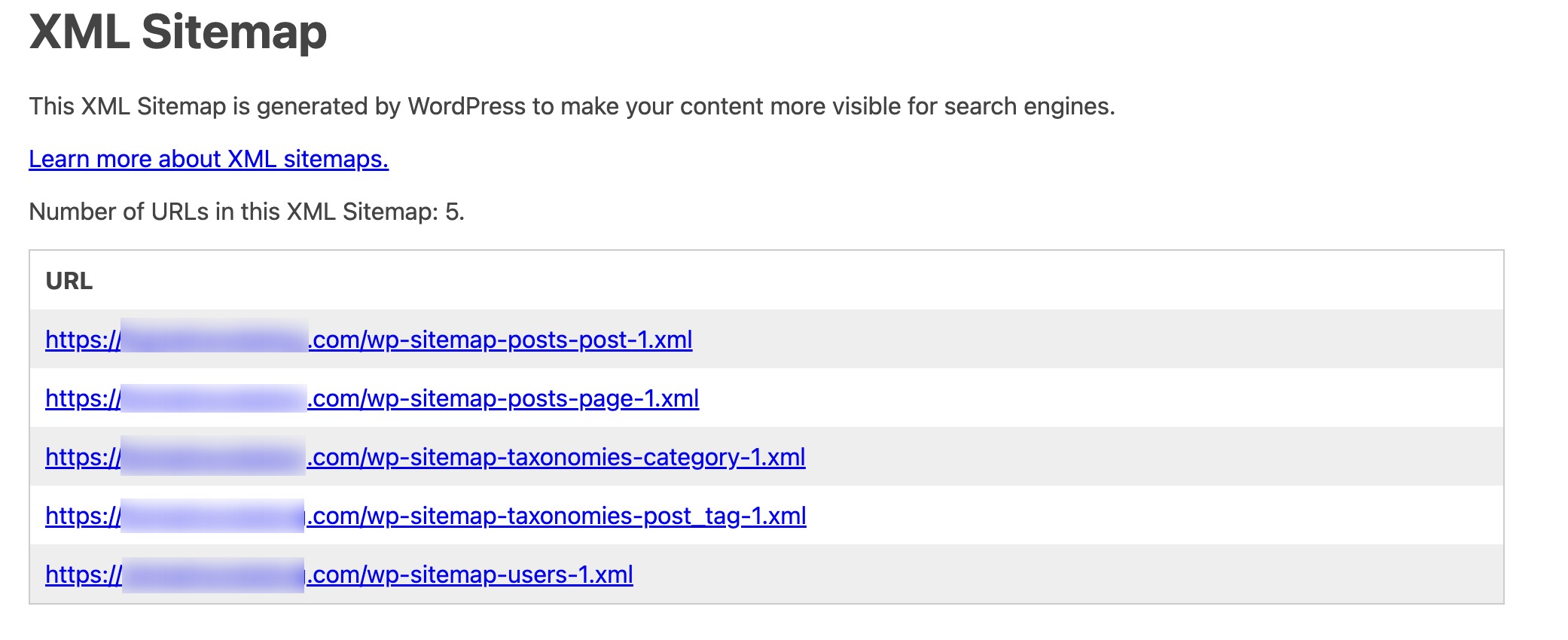
For example, a typical WordPress sitemap can include sections like:
- Posts
- Pages
- Categories
- Tags
- Post formats
- Users
If you’re using an older version of WordPress (before 5.5), you’ll need a plugin to generate a sitemap. Plugins like Rank Math not only create sitemaps but also give you advanced control, such as including or excluding specific pages and customizing priority settings.
2.2 Rank Math SEO (WordPress Plugin)
With Rank Math SEO, you can easily create and manage XML sitemaps right inside your WordPress dashboard. This feature ensures search engines can efficiently crawl and index your website without requiring any manual setup.
If you haven’t installed Rank Math yet, it’s worth considering. You’ll not only get powerful sitemap options but also access to advanced SEO tools.
You can refer to our dedicated tutorial on installing a plugin on your WordPress website.
Once Rank Math is active, the plugin automatically generates and updates your sitemap to match your content. This includes posts, pages, categories, images, and even custom post types. You also have full control, decide which pages or sections to include or exclude with just a few clicks.
Setting up sitemap settings is quick and easy in Rank Math. Start by navigating to WordPress Dashboard → Rank Math SEO and enable the Sitemap module, as shown below.
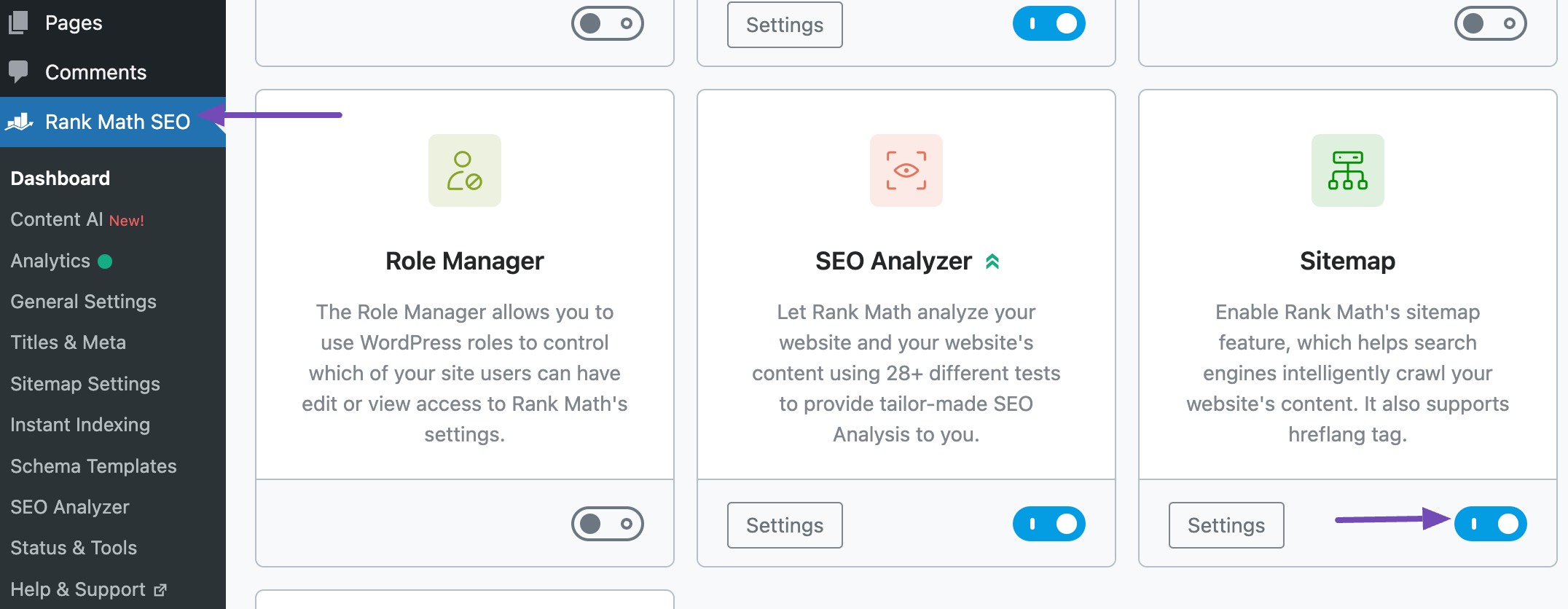
To view your XML sitemap, navigate to Rank Math SEO → Sitemap Settings, where the URL to your XML sitemap will be displayed at the top of the page.
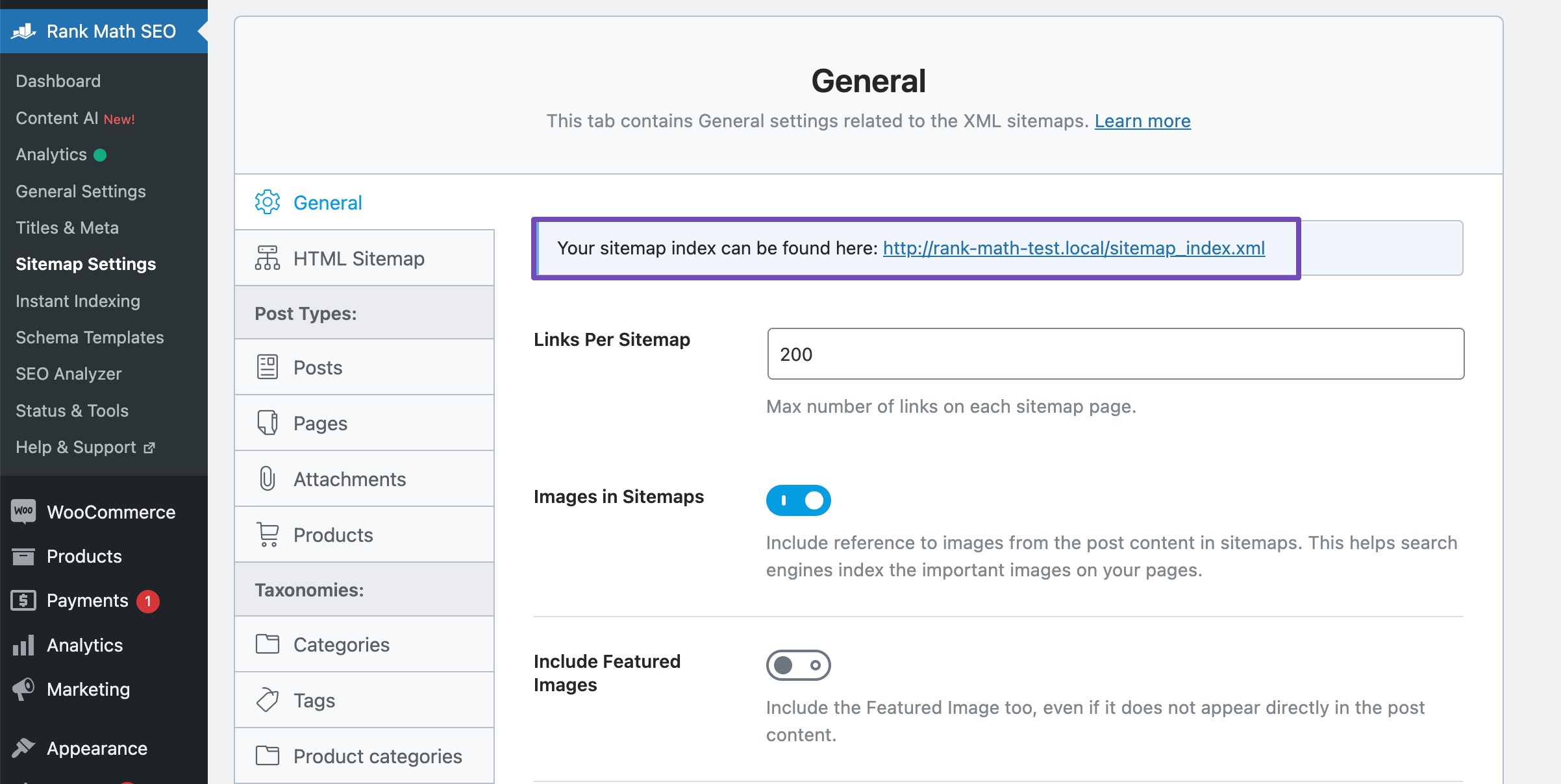
Your XML sitemaps will appear below.

Refer to our dedicated tutorial to configure your XML sitemap using Rank Math.
Rank Math also lets you generate different types of sitemaps beyond the standard XML version. You can create HTML sitemaps, news sitemaps, custom sitemaps, and even video sitemaps with ease.
Rank Math offers a free version with robust features, and premium plans start at just $95.88 for the first year if you need more advanced options.
2.3 XML-Sitemaps.com (Web Tool)
XML-Sitemaps.com is a free XML sitemap generator suited for smaller websites.
All you need to do is enter your website URL, and the tool will generate a sitemap for you. No technical knowledge required.
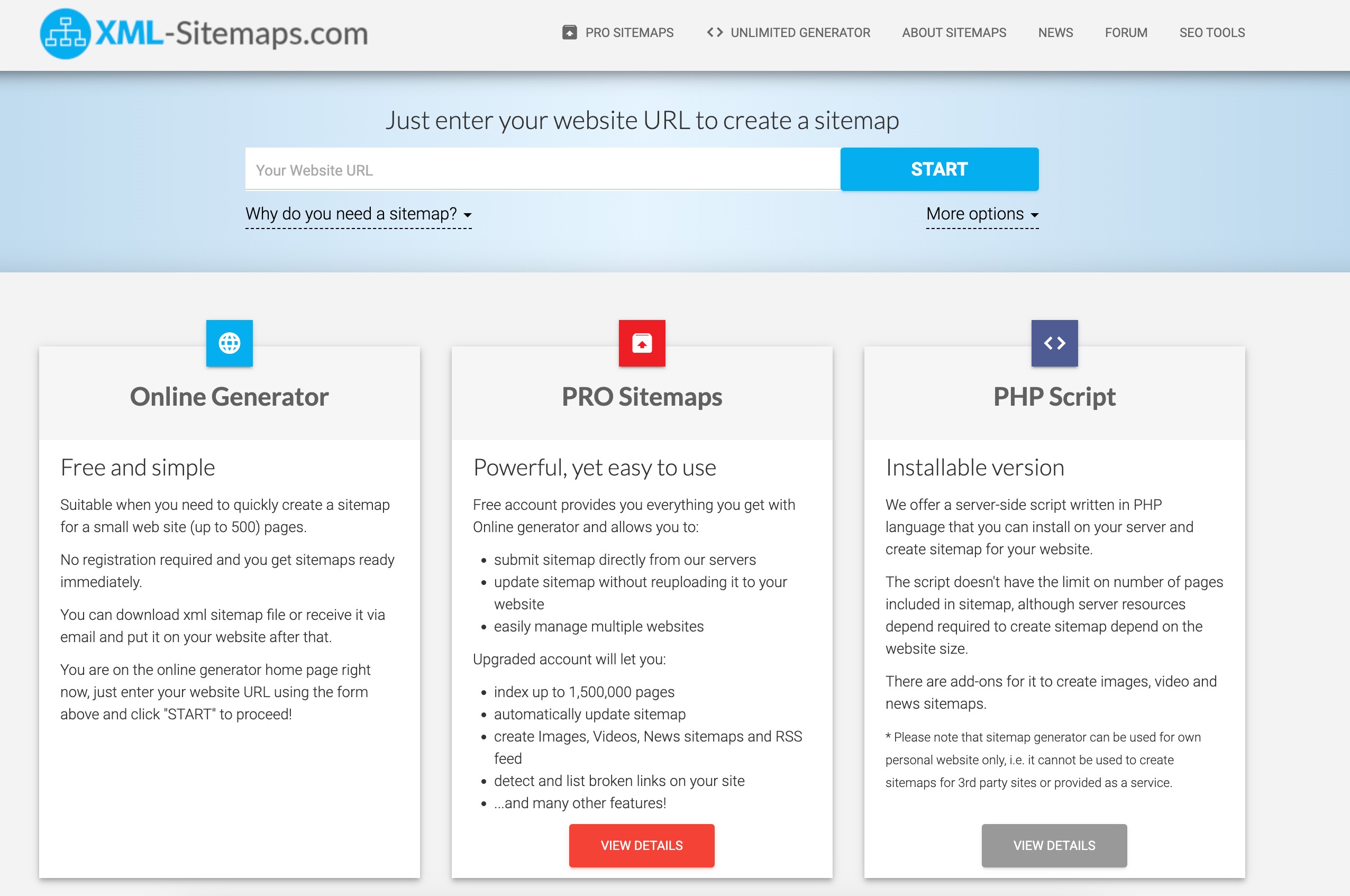
For extra flexibility, you can customize your sitemap in the More Options section. Here, you can:
- Include a priority attribute to show search engines which pages are more important.
- Add a Last Modified date so crawlers don’t waste time re-indexing unchanged pages.
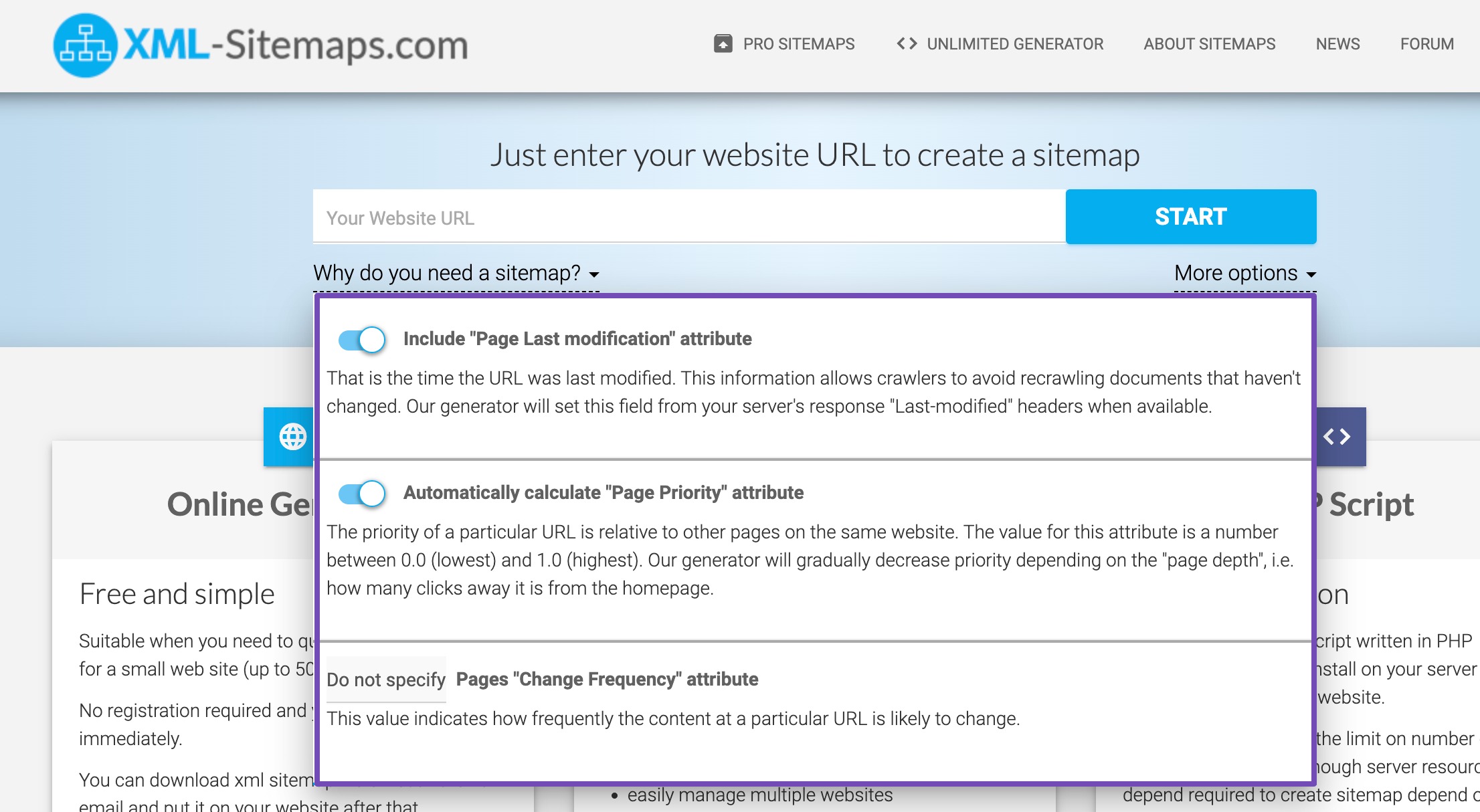
Best of all, you don’t even need to register to use the tool. Its simple interface makes it accessible to anyone, whether you’re just starting out or managing a small site.
You will have to download the generated sitemap and upload it to your site. Also, you need to generate a new sitemap every time you add a new content to your site.
2.4 Octopus.do (Web Tool)
If you prefer a more visual approach, Octopus.do is perfect for planning and optimizing your website structure.
With its drag-and-drop sitemap builder, you can:
- Design and visualize your site’s navigation.
- Group related pages and spot orphaned content.
- Edit SEO meta tags like titles, descriptions, and keywords directly inside the sitemap.

For better organization, you can group related pages, prioritize their importance, and identify orphaned content to improve your site’s overall structure.
You can also export your sitemap in multiple formats, XML, PNG, PDF, CSV, or TXT, depending on your needs.
Collaboration is another big plus. You can share your sitemap with unlimited collaborators and even allow them to edit in real time. Free and paid plans are available, with premium starting at $12/month.
2.5 Screaming Frog (Desktop Tool)
For a more advanced option, Screaming Frog is widely known for its powerful crawling features. Alongside auditing your website, it can generate highly detailed XML sitemaps that follow search engine guidelines.
With Screaming Frog, you can:
- Create image sitemaps, which are especially useful for visually rich websites.
- Scan your entire site and identify all URLs.
- Customize your sitemap by including or excluding URLs.
- Set priority and change frequency attributes to match your SEO strategy.

Its flexibility makes it an excellent choice if you’re running a larger or more complex website and need precise control over your sitemap.
3 Conclusion
Choosing the right sitemap generator depends on your website’s size, structure, and needs.
Using the tools’ capabilities, you can streamline the sitemap creation process, maintain up-to-date sitemaps, and improve your website’s visibility in search engine results.
No matter which tool you choose, the important part is making sure your sitemap is accurate and up to date.
By doing so, you help search engines crawl your site more efficiently, ensure all your key pages are discoverable, and improve your chances of ranking higher in search results.
If you like this post, let us know by tweeting @rankmathseo.
